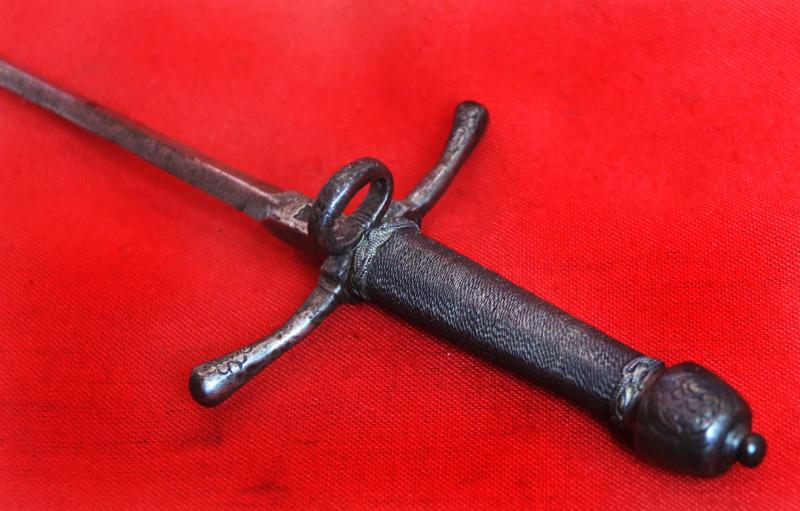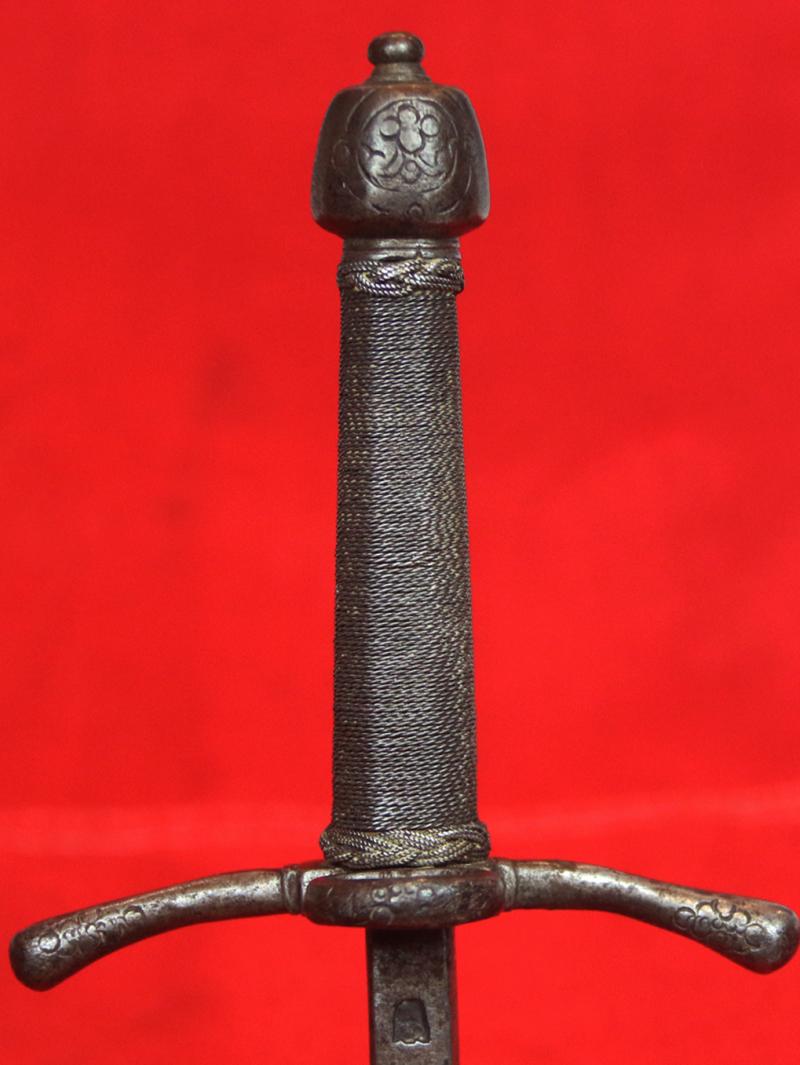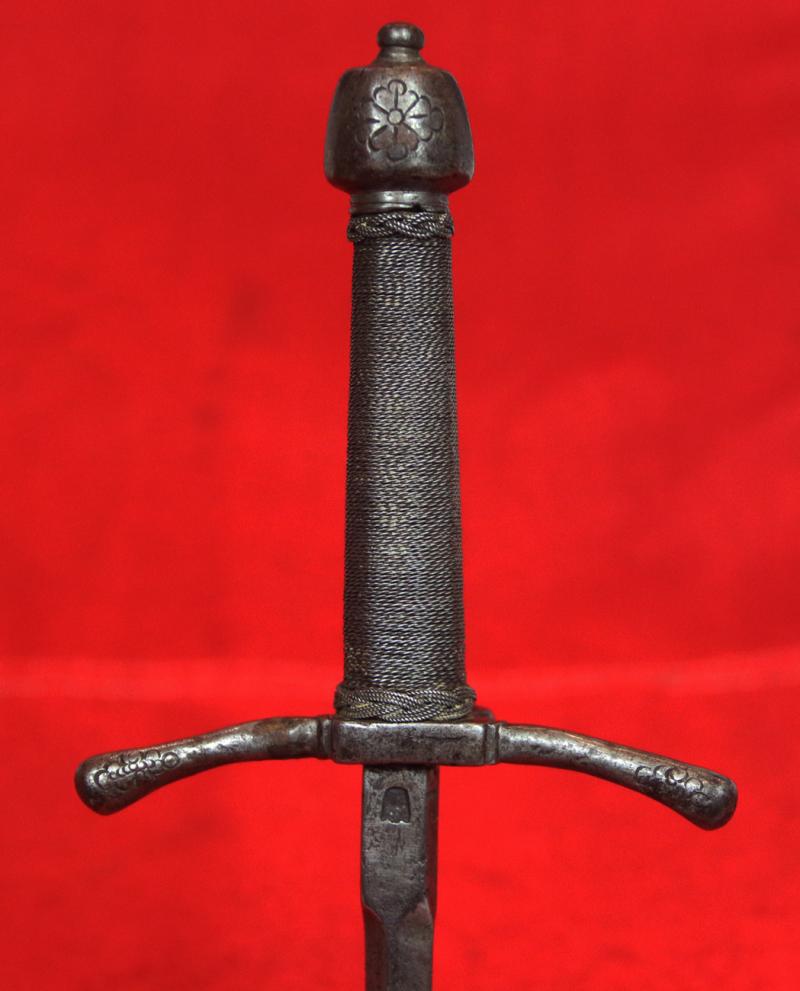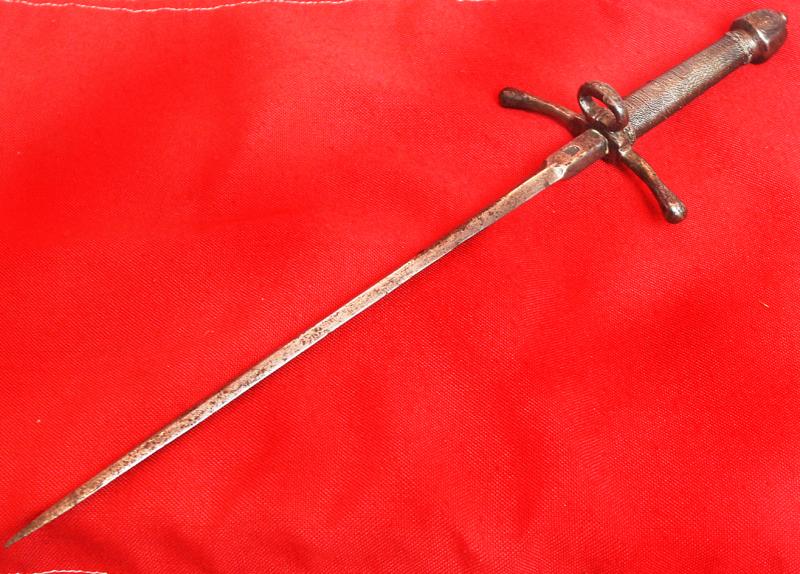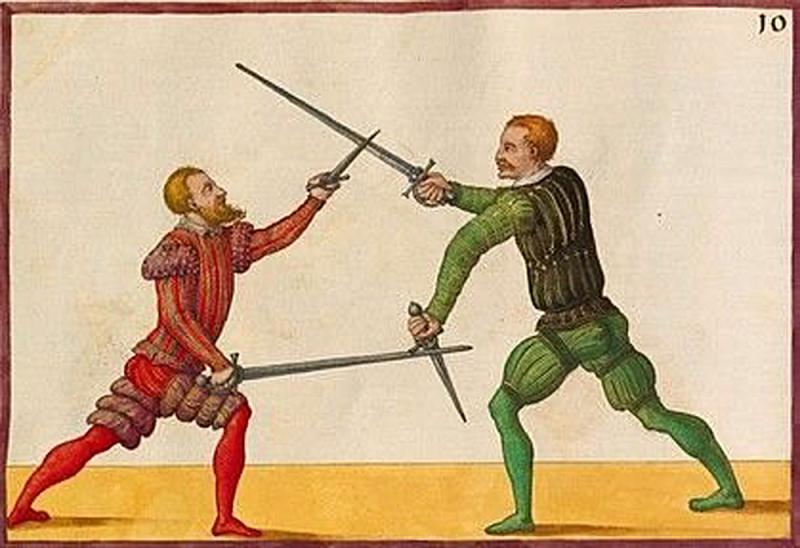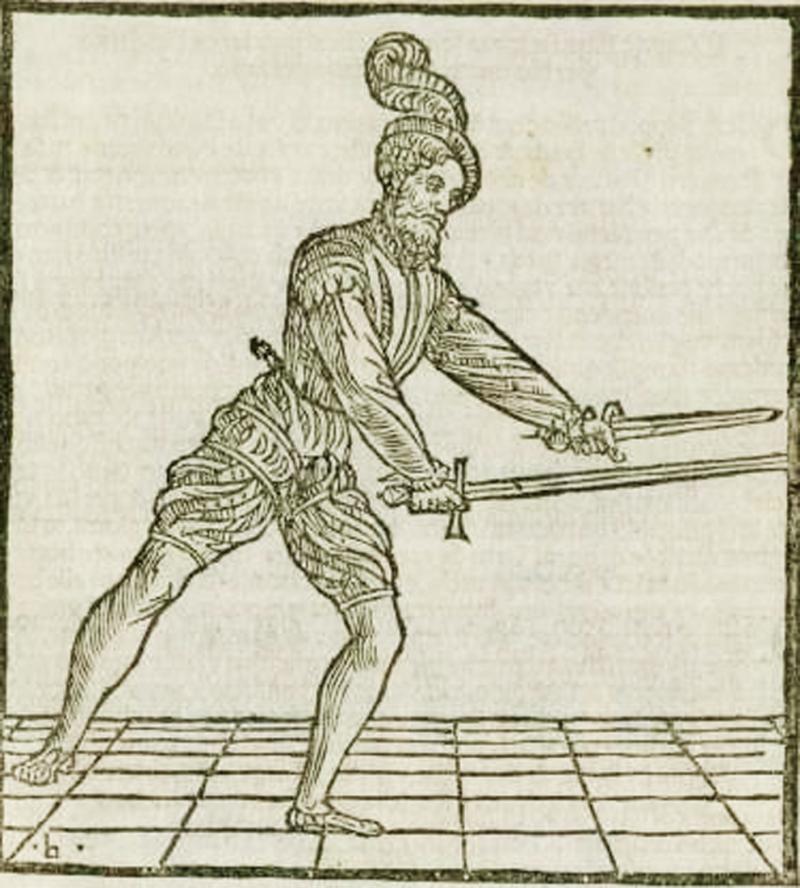A Very Rare Renaissance Main-Gauche, a Left Hand Parrying Dagger. Italian circa 1590-1620. Likely Made for a Royal Duke. With A Ducal Crown Engraved Pommel
A wonderful elegant example of these rare 'Maine Gauche' daggers used for parrying in the duel, in the era of England’s Queen Elizabeth the 1st, King James 1st, to King Charles the 1st, and it is in excellent plus condition.
The left handed parrying weapon used in the left hand, in conjunction with the long bladed Rapier in the right, in sword combat. In sword fighting, the main-gauche French for "left hand" is a dagger used in the off-hand, mainly to assist in parrying incoming thrusts, while the dominant hand wields a rapier or similar longer weapon intended for one-handed use. It may also be used for attack if an opportunity arises, such as for the ‘coup de grace’. The dagger has a slender four sided blade of diamond-section, with twin Crowned M armourer's marks, one per side at the ricasso. The hilt is fully engraved, and the outside of the pommel it has an engraved ducal crown within a circlet, and the inside pommel a rhombic Chinese flower, possibly part of the dukes family crest or symbol. It has an outer single ring guard and a polygon form conical pommel, converging towards the top pommel button. {A design recognised as pommel ‘32’, circa 1590-1610, in A.V.B.Normans Rapier and Small Sword 1460-1820.} It also has a very fine Turk's Head knot terminated twisted steel wire grip, in excellent condition.
We show in the gallery a close up of the pommel engraving, showing the style of crown, as can be seen in an early portrait of one being worn, that we show attached with it.
The parrying dagger is a category of small handheld weapons from the European late Middle Ages and early Renaissance. These weapons were used as off-hand weapons in conjunction with a single-handed sword such as a rapier. As the name implies they were designed to parry, or defend, more effectively than a simple dagger form, typically incorporating a wider guard, and often some other defensive features to better protect the hand as well. They may also be used for attack if an opportunity arises.
The use of this off-hand weapon gradually fell out of favour as sword fighting evolved. The use of progressively lighter primary weapons such as the small sword and épée.
The main-gauche {French for "left hand"}, was used mainly to assist in defense by parrying enemy thrusts, while the dominant hand wielded a rapier or similar longer weapon intended for one-handed use. Its most characteristic feature was downturned quillons that protected the hand, and the ring to one side.
Courtiers in later half of the 16th century did indeed wore rapiers to court as a sign of gentlemanly status and the privilege of engaging in extra-judicial duels of honour, with the main-gauche parrying dagger.
The rapier and dagger combination was primarily designed for self-defence using fighting techniques developed in Italy that are the ancestors of modern fencing. The sixteenth-century rapier was both a slashing and stabbing weapon. Its accompanying dagger was used in the left hand for parrying and stabbing in close. The stiff slender blades of both were designed to pierce clothing rather than armour.
The Renaissance was a fervent period of European cultural, artistic, political and economic “rebirth” following the Middle Ages. Generally described as taking place from the 14th century to the 17th century, the Renaissance promoted the rediscovery of classical philosophy, literature and art.
Some of the greatest thinkers, authors, statesmen, scientists and artists in human history thrived during this era, while global exploration opened up new lands and cultures to European commerce. The Renaissance is credited with bridging the gap between the Middle Ages and modern-day civilization.
Code: 25340



